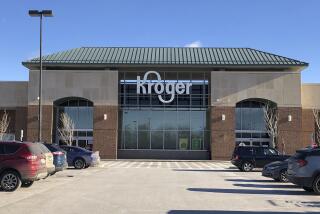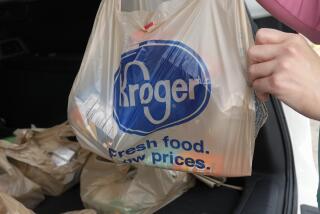Lots of Bidders Likely When KKR Sells Parts of Nabisco
Now that a group led by a New York investment firm has prevailed in the most costly buyout ever, the new owner of RJR Nabisco will set about a different sort of task: carving its $24.5-billion prize into pieces and selling them off.
Such is the odd logic of the deal, which winner Kohlberg Kravis Roberts & Co. is likely to finance in part by selling assets of the food and tobacco conglomerate. Not that there will be a shortage of takers: RJR’s line-up of food products is highly coveted by Procter & Gamble, Ralston Purina and other giant consumer firms.
“Just about every food company in the world that you could mention would be interested in parts of RJR Nabisco,” said John Maxwell, an analyst at Wheat First Securities in Richmond, Va.
The food parts include nuts, candy, cookies, crackers, cereals, fruits and vegetables marketed under such famous brand names as Planters, Life Savers, Oreos, Chips Ahoy!, Premium, Ritz, Del Monte and dozens of others.
They are worth between $11 billion and $15 billion overall, according to one source close to the transaction.
Although many brand names are likely to go on the block, Kohlberg Kravis Roberts appears likely to sell off less of RJR Nabisco than might have been the case with a victory by RJR management, a competing bidder.
One source close to the negotiations said the Kohlberg Kravis investment firm planned to sell just $5 billion to $6 billion of food assets.
The source claimed that RJR Nabisco’s management would have been more likely to unload most or all of the food assets.
No matter who had won, the tobacco business was likely to be retained. RJR Nabisco’s cigarette brands include Camel, Salem, Winston, Vantage and others, and the business remains highly lucrative despite growing social disapproval of smoking.
In the third quarter of this year, for example, the company’s food sales exceeded those of cigarettes, yet the $497 million in tobacco earnings greatly surpassed the $276 million in income from food.
“Tobacco is where all the money is coming from,” said Maxwell, noting the importance of cash to the debt-laden victors of the bidding war. “It’s your jewel.”
Potential buyers of the grocery brands amount to a Who’s Who of the food industry. In addition to Procter & Gamble and Ralston Purina, such giants as Nestle, Pepsico, General Mills and Quaker Oats are believed to be interested in parts of RJR Nabisco.
Procter & Gamble, which has suffered disappointments in the cookie business, is believed to covet RJR Nabisco’s cookies and crackers.
Officials of the Cincinnati-based consumer giant have acknowledged their interest in RJR Nabisco’s food products, but have not identified specific items.
Ralston Purina, the big pet food manufacturer, may be interested in RJR Nabisco’s pet snacks and cereal lines.
Castle & Cooke, which owns fruit producer Dole, may find Del Monte fruits and vegetables particularly attractive, analysts said.
Ralston Purina, Procter & Gamble and Castle & Cooke belonged to a group that considered buying the entire RJR Nabisco company but recently bowed out.
“You’re going to see big chunks going, but I don’t think anybody wants to buy the whole thing,” said Neal Kaplan, an analyst with the investment company of Interstate/Johnson Lane in Charlotte, N.C.
The extraordinary breadth of RJR Nabisco’s product line--it sells more than 33 different kinds of crackers alone--makes for a great number of potential buyers.
Hershey, the candy maker, which already owns Life Savers in Canada, may wish to gain control of Life Savers in this country, for example, analyst Maxwell speculated.
In addition to financial considerations, the new owners have another reason to sell a number of food divisions while keeping tobacco: Production of the various cigarettes is concentrated at two facilities in North Carolina.
By contrast, the food properties are scattered throughout the United States, thus different food brands can be spun off much more easily.
Kaplan suggested that the new owners--fresh from one bidding war--are “hoping they can start another bidding war for the parts.”
Main story on Page 1, Part I
More to Read
Inside the business of entertainment
The Wide Shot brings you news, analysis and insights on everything from streaming wars to production — and what it all means for the future.
You may occasionally receive promotional content from the Los Angeles Times.










